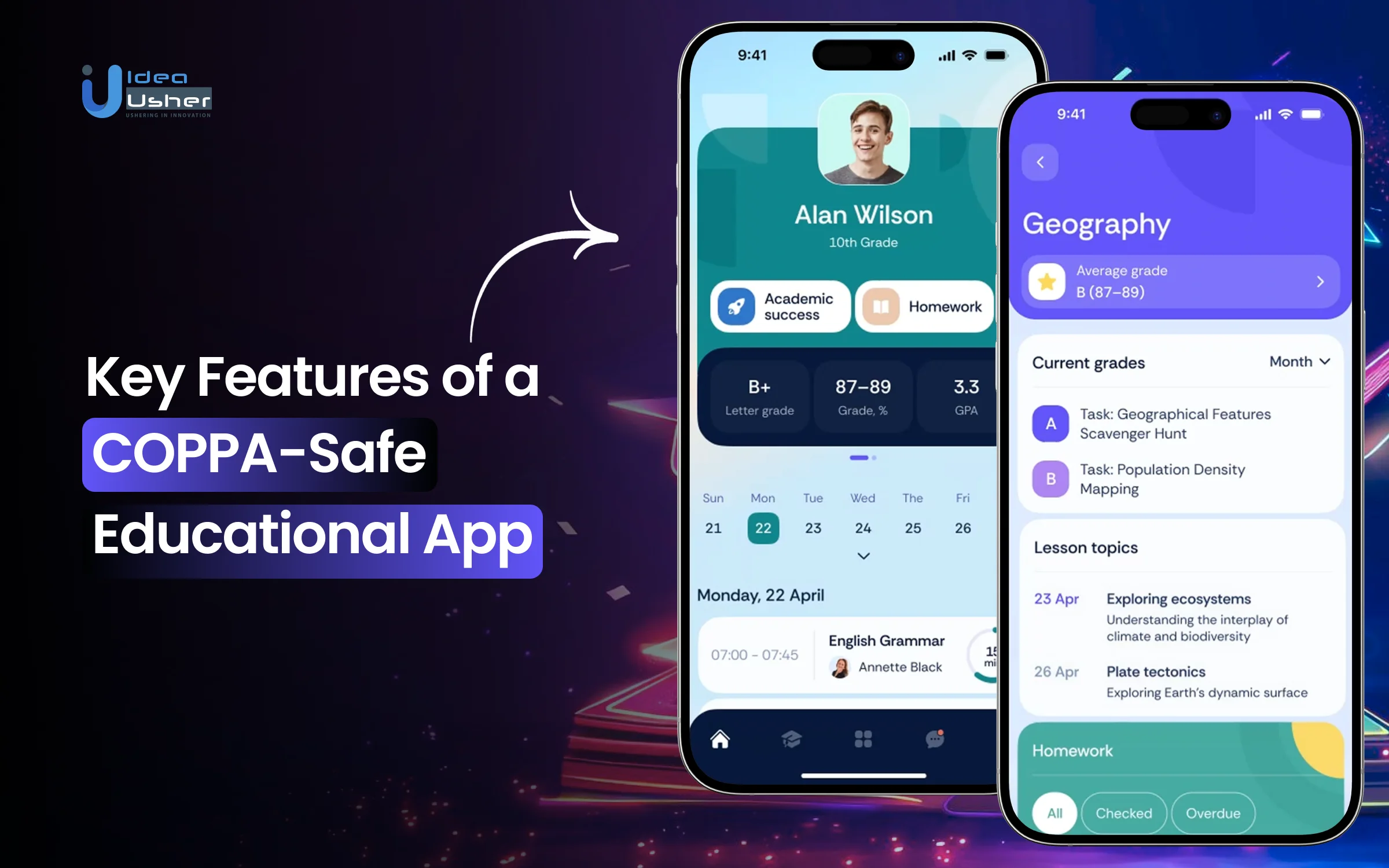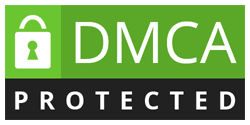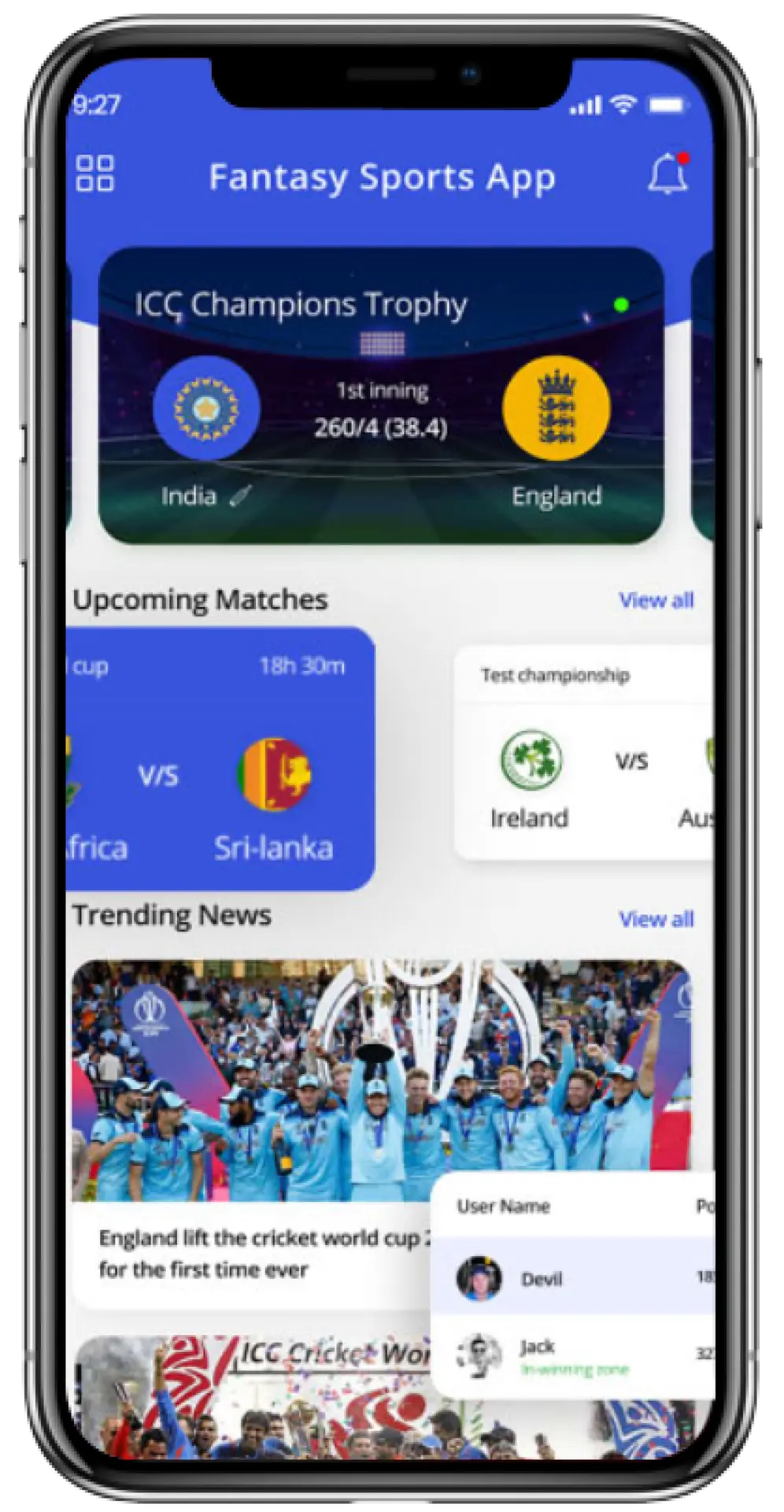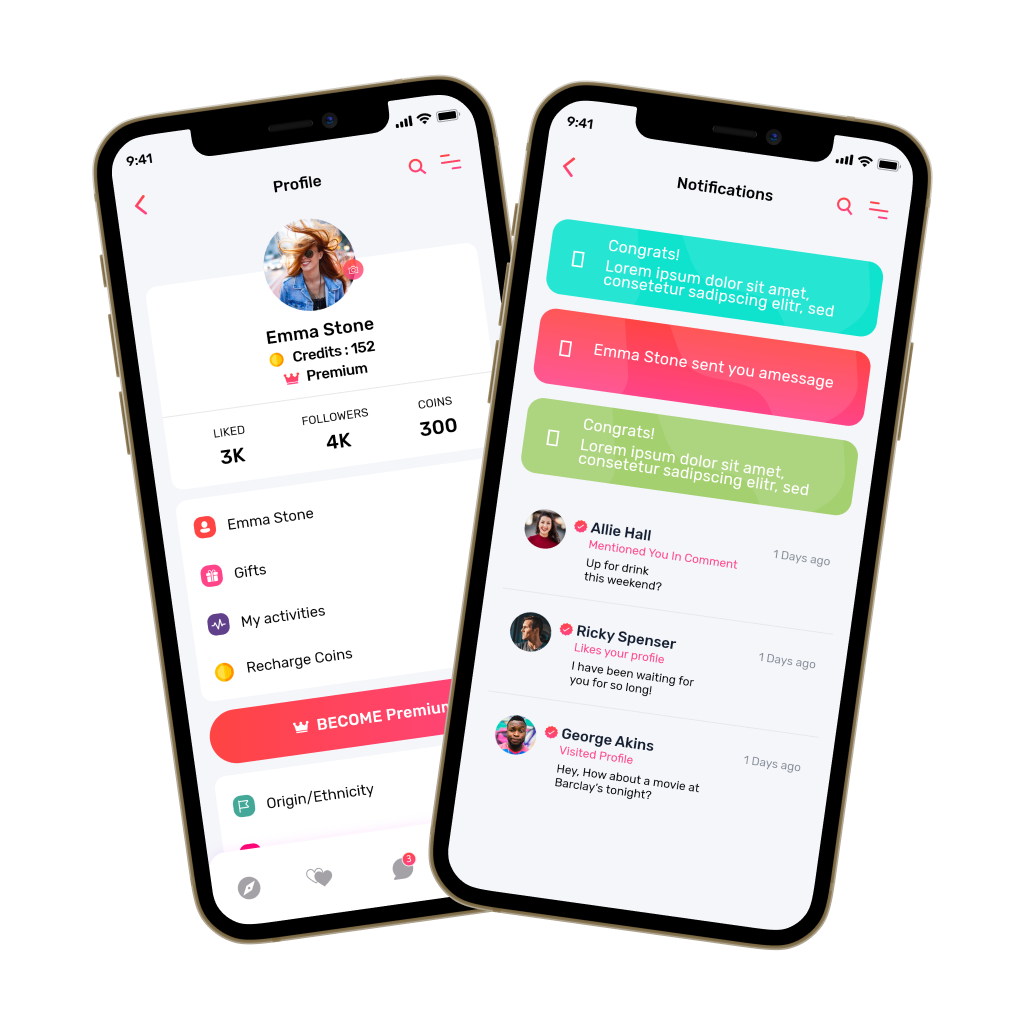Parents download learning apps hoping for a safe space where their children can explore, play, and grow. But behind the bright colors and friendly characters, one question lingers: How is my child’s data being handled? As digital privacy concerns rise, building a COPPA-compliant educational app isn’t just about meeting regulations; it’s about creating a space families can trust without worrying about what’s happening behind the screen.
Modern kids’ apps now blend thoughtful design with privacy-first technology with limited data collection, encrypted storage, transparent permissions, parental dashboards, and age-appropriate experiences that respect boundaries. These features don’t just check compliance boxes; they create a safe, intuitive digital playground where learning can truly thrive.
In this article, we’ll break down the essential features every COPPA-safe educational app needs, from privacy-first architecture to interaction design that protects young users. By the end, you’ll know exactly what it takes to create an enriching experience for kids and a reassuring one for parents.

What Is a COPPA-Safe Kids Learning App?
A COPPA-Safe Kids Learning App is a digital platform made for children under 13 and follows the Children’s Online Privacy Protection Act (COPPA). It makes sure that every time a child uses the app, their privacy and safety are protected. Unlike regular learning apps, a COPPA-safe app focuses on handling data legally, keeping parents informed, and creating a secure experience just for kids.
These apps deliver educational content while protecting children’s personal info. It limits data collection, blocks tracking, enables parental controls, and keeps the environment free of ads or manipulative design, ensuring a safe, compliant, and child-friendly learning experience.
- Minimal and Purpose-Driven Data Collection: The app collects only the information necessary for learning features, avoiding any unnecessary or sensitive data from children under 13.
- Verifiable Parental Consent (VPC): Parents must provide clear, verified approval before any data is collected, through methods like OTP, ID verification, or card checks.
- Transparent and Parent-Friendly Privacy Policies: The app openly explains what data is collected, how it’s used, and how parents can manage or delete their child’s information.
- No Behavioral Tracking or Targeted Advertising: COPPA-safe platforms strictly avoid personalized ads or data-driven tracking that monitors children’s behavior across apps.
- Secure Data Storage & Restricted Access: Collected information is encrypted, stored safely, and never shared with third parties without explicit parental permission.
- Clear In-App Design and Safe Navigation: Interfaces avoid dark patterns, hidden prompts, or misleading buttons, ensuring children interact safely and intuitively.
- Parental Controls & Visibility: Parents can review activity, manage permissions, and control how their child uses the app at any time.
- Age-Appropriate, Non-Exploitative Content: All learning material and in-app communication remain safe, relevant, and appropriate for young users.
- Easy Data Deletion and Opt-Out Options: Parents can quickly request data deletion, revoke consent, or opt out of certain features, ensuring ongoing control over privacy.
What Data Can a COPPA-Safe App Collect?
Not all data is treated equally under COPPA. Understanding what’s permitted and off-limits helps developers create safer, compliant learning experiences for children. Here’s a breakdown of data a COPPA-safe app can and cannot collect.
| Category | Allowed Data Collection (With Limits) | Restricted / Prohibited Data Collection |
| Basic Information | First name or screen name, age range, parent’s contact info | Child’s full name, personal contact details (email, phone number, address) |
| Learning & Usage Data | Learning progress, quiz scores, session duration, in-app activity needed for educational features | Behavioral profiles, cross-app tracking, data used for targeted advertising |
| Technical Information | Device type, operating system, crash logs, performance metrics | Unique persistent identifiers used for tracking across apps or platforms |
| Location Data | General region or country (only if essential) | Precise geolocation (street-level accuracy) |
| Media & Content | Child-created drawings or text (stored securely and with parental permission) | Photos, videos, or audio recordings containing the child’s image/voice without verified parental consent |
| Third-Party Sharing | Sharing data strictly for internal app operation or parental communication | Sharing or selling data to advertisers, analytics tools, data brokers, or external partners |
| Account & Login | Parent-managed login credentials | Any child-managed login that collects personal identifiers |
Why 74% of Parents Prefer COPPA-Safe Learning Apps?
The global education apps market hit USD 6.2 billion in 2024 and is expected to reach USD 41.6 billion by 2033, with a 21.5% CAGR from 2025–2033. Growth is fueled by improved technology and a global demand for safer, transparent learning environments for children.

Today, 74% of parents now consider built-in safety and parental control features as a deciding factor when choosing apps for their children, making COPPA-safe design a competitive necessity rather than an optional add-on.
Here’s what matters to them:
- Structured, Gamified Learning Paths: Learning uses gamified modules with clear goals to increase engagement by 20% and outcomes by 10%. Challenge-based activities can boost gains up to 90%, making learning interactive and effective.
- Offline Access: 55% of new apps support offline mode, enabling learning in low-connectivity areas. Offline and cross-platform access boost retention by 31%, widening market reach.
- Safe and Trustworthy Experience with Parental Controls: 68% of educational apps include dashboards, screen-time limits, and monitoring tools. With 61% reviewing analytics weekly, strong safety features are now essential for adoption.
- Multilingual Support: 44% of new apps support three or more languages, and 54% have multilingual content. Toca Boca increased downloads by 42% after adding languages, showing the importance of accessible, inclusive content.
- Ad-Free, Focused, and Skill-Oriented Content: Offers a distraction-free environment with tools for literacy, math, STEM, problem-solving, and progress tracking to help parents monitor their child’s growth.
This shift in parent behavior is reshaping how edtech companies design and deliver kids’ learning experiences.
COPPA-safe educational apps succeed by providing safer experiences, improved learning, offline access, parental controls, and multilingual content, meeting the needs of parents, students, and the global market. Gamification boosts engagement and performance. For businesses, strong demand, rapid market growth, and user preference for safety and quality make now the ideal time to launch.

Key Features of a COPPA-Safe Educational App
The essential features of COPPA app design ensure a safe, private, and age-appropriate learning experience for children. These key elements help your educational app meet compliance standards while keeping kids engaged and protected

1. Parent Verification & Consent
The app starts by securely verifying parents through email, OTP, or small transactions. This way, adults stay in control of data permissions. Parents can easily see what information is collected and can approve, change, or withdraw consent at any time for full transparency.
2. Child-Safe Onboarding
Kids join using anonymous IDs and age-gating instead of personal details. The app collects only essential information to personalize learning, keeping onboarding simple, safe, and fully aligned with COPPA’s “minimum data” principle.
3. Secure Data Storage & Transmission
All child-related data is encrypted in transit and at rest. Role-based access, secure cloud storage, and automated deletion schedules ensure strong protection against breaches while maintaining long-term COPPA compliance.
4. Ad-Free, Tracking-Free Learning
The app removes all third-party ads and behavioral trackers. Content recommendations rely only on in-app activity, creating a distraction-free space where children learn confidently without hidden data profiling.
5. Parent Dashboard for Visibility & Control
Parents can monitor progress, set limits, manage permissions, and request data deletion from one dashboard. This transparency strengthens trust while giving families full control over the child’s digital learning experience.
6. Safe In-App Communication
Any communication features use templates, AI filtering, and human moderation. This prevents sharing of personal information and ensures interactions remain structured, safe, and developmentally appropriate.
7. Age-Appropriate Learning Content
Learning content and interface elements such as difficulty levels, visuals, and controls are designed to match children’s developmental stages. This makes it easier for young learners to navigate and stay interested without feeling overwhelmed.
8. Activity Logs & Reporting Tools
The app maintains audit-friendly logs of permissions, account actions, and data changes. These records help parents stay informed and make compliance management easier as the platform scales.
9. Regular Safety Notifications & Alerts
Parents receive alerts for new logins, permission updates, or important safety actions. This ongoing communication reinforces trust by ensuring they always know what’s happening on their child’s account.
10. Child-Friendly Privacy Policy
A simple, icon-based privacy policy explains what data is collected and why. Parents get a detailed version, while children receive an easy, friendly explanation they can understand independently.
Advanced Features to Make Your COPPA Kids’ Learning App Stand Out
Discover the most impactful features of COPPA app design that help your kids’ learning platform rise above the competition. These advanced capabilities strengthen safety, enhance engagement, and create a smoother, parent-approved experience.
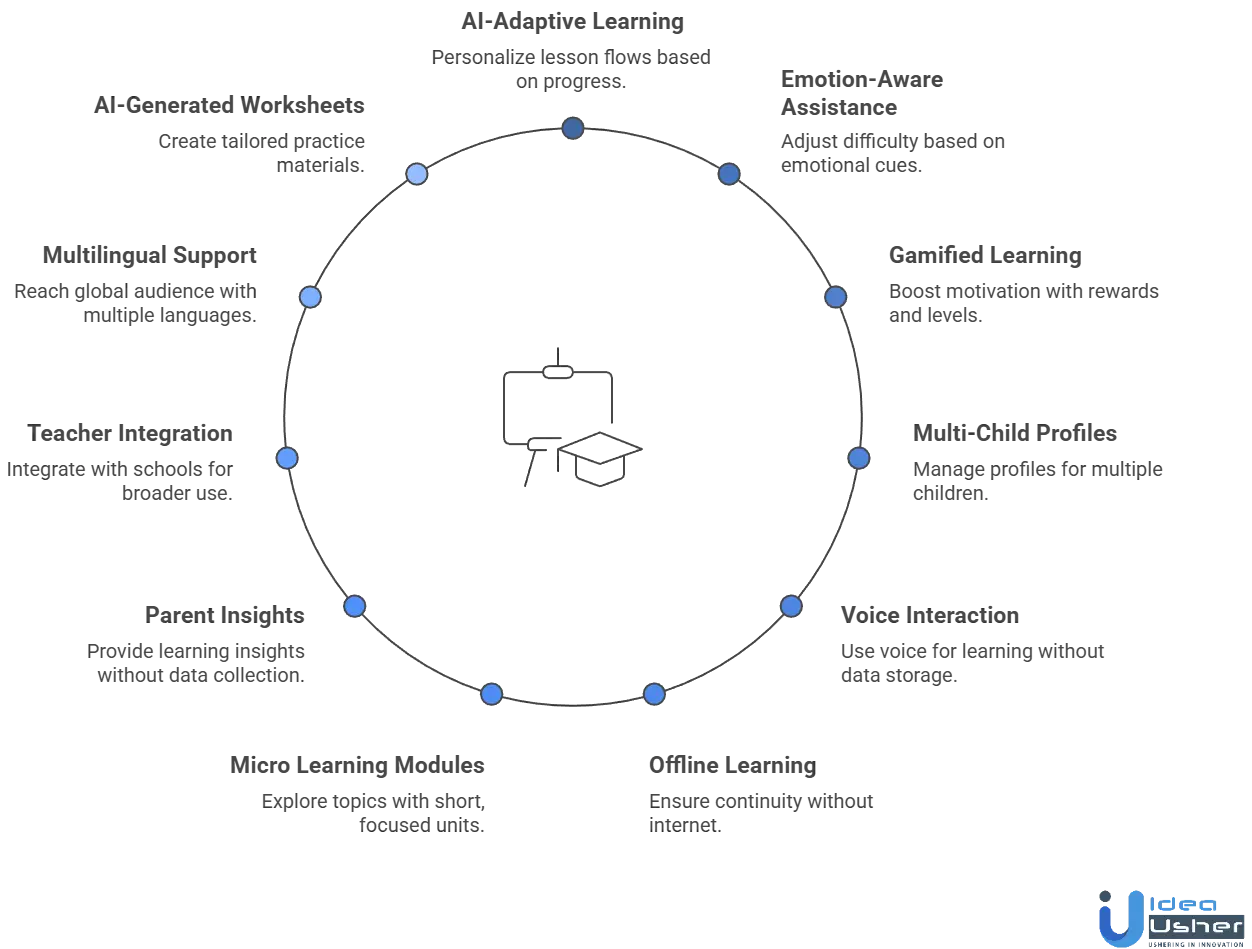
1. AI-Adaptive Learning Paths
An advanced AI engine analyzes progress, learning speed, and struggle points to create highly personalized lesson flows. This helps children learn at their own pace while ensuring parents get deeper insights into development and improvement areas.
Example: Khan Academy Kids uses a “Learning Path” that adjusts based on mastery. Also, its “Learning Paths informed by MAP Growth” use assessment data to tailor the path to students’ needs.
2. Emotion-Aware Learning Assistance
The system detects behavioral cues like idle time or incorrect attempts but doesn’t collect biometric data. When it notices frustration or disengagement, it adjusts difficulty, offers hints, or sends motivational nudges to support children.
Example: DreamBox Learning identifies learning struggle patterns and automatically shifts lesson pacing to reduce frustration (used in K–5 math).
3. Gamified Learning Worlds
Beyond simple badges, the app can offer an evolving learning world where kids unlock levels, customize avatars, and earn safe in-app rewards. This boosts motivation and encourages consistent practice while maintaining a COPPA-safe, ad-free ecosystem.
Example: Kahoot! Kids uses structured interactions. Kids answer quizzes, take part in challenges, and work together, all without messaging or sharing personal data.
4. Multi-Child Profiles
Parents with multiple kids can manage several profiles under one account. The app uses secure, isolated progress environments so each child receives personalized learning while parents track activity without switching accounts constantly.
Example: ABCmouse’s Parent Portal supports up to 3 children per parent, with each child having their own learning path, progress tracking, and personalized activity suggestions.
5. Voice-Based Learning Interaction
Children can answer questions, spell words, or practice reading aloud without sending audio files to servers using on-device voice processing. This supports early literacy learning while staying compliant with data minimization rules.
Example: Read Along by Google uses on-device speech recognition (no audio sent to servers) to help kids practice reading aloud safely.
6. Offline Learning Mode
Children can download lessons for offline use, and all progress is stored securely until synced online. This ensures learning continuity during travel or low-connectivity areas without compromising data security.
Example: Reading Eggs provides offline access to learning modules, letting children continue phonics and reading lessons even without internet.
7. Topic-Based Micro Learning Modules
Short, focused learning units in areas like phonics, early math, reasoning, vocabulary, or science basics help children explore topics that interest them. This approach keeps kids engaged and gives parents more flexibility when planning learning sessions.
Example: PBS Kids Games offers modular bite-size activities across reading, math, science, and creativity, each acting as a micro-lesson.
8. Parent Insights
The app provides deep learning insights like accuracy trends, concept mastery, attention patterns, and next steps, all without collecting identifiable data. Parents can thus see their child’s strengths and areas needing help.
Example: NovaKid uses a parent dashboard that tracks each child’s progress in English language lessons, assignments, and gamified exercises.
9. Teacher/School Integration Mode
An optional educator dashboard lets teachers assign tasks, track class performance, and share feedback through a safe, controlled environment. This expands the app’s market potential to schools and educational institutions.
Example: Khan Academy Kids (School Mode) provides educator dashboards, class management, and progress analytics for classroom environments.
10. Multilingual Learning Support
Support for multiple languages helps the platform reach a global audience and supports bilingual families. Content remains culturally relevant, easy to follow, and adapted to age-appropriate reading levels.
Example: Lingokids offers learning activities in multiple languages and is used by millions globally, making it truly cross-language kid-friendly.
11. AI-Generated Worksheets & Activities
Parents can generate custom worksheets or revision sets using an AI engine that stays strictly within COPPA guidelines. Children get extra practice tailored to their learning gaps, without requiring external tools.
Example: Khan Academy uses AI-informed learning paths (especially in district partnerships) to generate tailored exercises and problem sets based on student assessment data.

How IdeaUsher Will Help to Build a COPPA-Safe Educational App?
IdeaUsher specializes in creating COPPA-compliant educational apps that are safe, engaging, and scalable. Our features of COPPA app include gamification, parental controls, and multilingual support, delivering apps that kids love and parents trust.
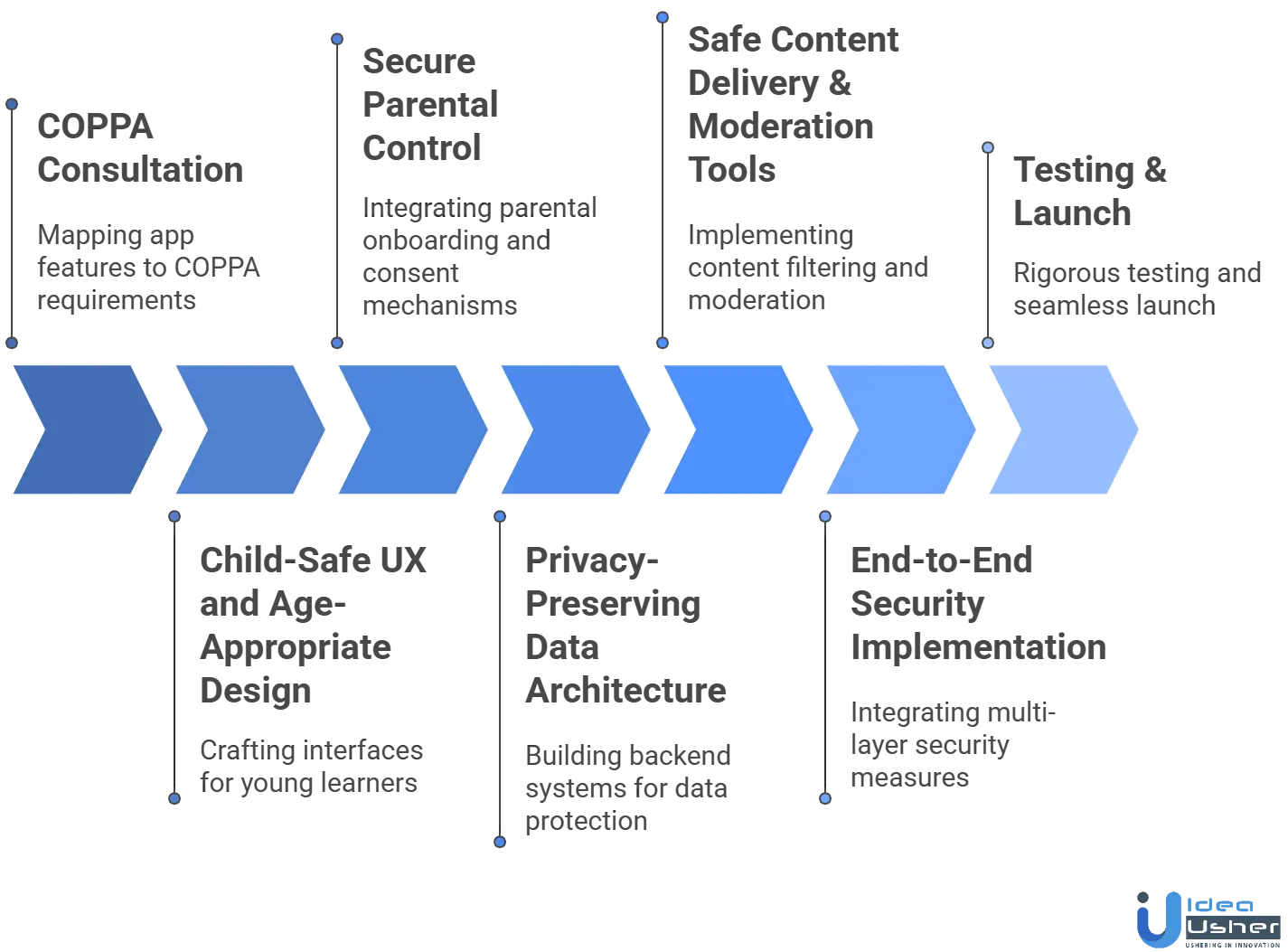
1. COPPA Consultation
Our team begins by mapping every feature of your app to COPPA requirements. We identify what data can be collected, how it will be stored, and where parental consent is required. This ensures the product is designed with safety, privacy, and legal compliance from day one.
2. Child-Safe UX and Age-Appropriate Design
We craft interfaces tailored for young learners with clear visuals, safe navigation flows, and zero dark patterns. All user journeys from sign-up, content access, and notifications are optimized to prevent accidental data sharing and ensure children interact within a protected environment.
3. Secure Parental Control & Consent Systems
Our developers integrate robust parental onboarding, verifiable consent mechanisms, and admin dashboards that give parents full transparency. Features include activity monitoring, usage limits, content filters, and complete control over what data is collected from their child.
4. Privacy-Preserving Data Architecture
We build backend systems that minimize data exposure, encrypt all sensitive information, and separate child accounts from identifiable data. Logging, API communication, and storage flows follow COPPA-approved privacy standards and best practices.
5. Safe Content Delivery & Moderation Tools
Our team adds automated content filtering, AI-driven moderation, and role-based access to ensure inappropriate content never reaches children. Educators and admins get full control over learning materials, assignments, quizzes, and classroom interactions.
6. End-to-End Security Implementation
We integrate multi-layer security including encryption at rest & in transit, secure authentication, restricted cookies, identity validation, and audit trails. This ensures your platform stays compliant even during scaling or feature expansion.
7. Testing & Launch
We rigorously test your app for COPPA compliance, security vulnerabilities, and smooth user experience. Once testing is complete, we handle a seamless launch, ensuring your app reaches the market safely and efficiently, along with all necessary documentation for regulatory or third-party verification.
Estimated Cost to Build a COPPA-Safe Learning App
Building a COPPA-compliant educational app requires not just development but careful implementation of privacy, security, and parental-control systems. Below is a cost breakdown covering design, compliance features, development, and testing.
| Component | Description | Estimated Cost |
| COPPA Consultation | Data-flow mapping, consent flows, safe data storage setup, compliance documentation | $8,000–$15,000 |
| Child-Safe UI/UX Design | Age-appropriate design, child-first navigation, accessibility guidelines | $5,000–$12,000 |
| Core Learning App Features | Lessons, quizzes, dashboard, progress tracking, gamification | $20,000–$40,000 |
| Parental Dashboard & Consent System | Parent profiles, monitoring tools, verifiable consent (email/SMS/ID validation) | $12,000–$25,000 |
| Security Infrastructure | Encryption, secure authentication, restricted cookies, tokenized sessions | $10,000–$18,000 |
| Content Moderation & Safe AI Filters | AI moderation, content filters, role-based access | $7,000–$15,000 |
| Testing & COPPA Validation | Pen-testing, data-flow checks, child-safety testing, compliance audits | $6,000–$12,000 |
| Deployment & Optimization | Server setup, app store deployment, early-stage monitoring | $3,000–$6,000 |
Total Estimated Cost
- MVP Version: $45,000–$65,000
- Mid-Level App: $70,000–$100,000
- Full-Fledged COPPA-Compliant App: $120,000–$150,000+
Note: Final cost varies based on compliance depth, security standards, number of features, and integration level with school systems or LMS.
Consult with IdeaUsher to get a detailed estimate and a compliance-first development roadmap for your educational app.
Technical Architecture for a COPPA-Safe Educational App
Designing a COPPA-safe educational app requires a robust technical architecture that protects children’s data. This section outlines the features of COPPA app and key components and best practices to ensure privacy, security, and compliance.
1. Secure User Authentication
To protect child accounts and verify adult access, the app must integrate a safe, role-based authentication layer.
Tech Stack Options:
- Backend Authentication: Firebase Auth, Auth0, AWS Cognito
- Parent Gate Logic: Custom OTP, email verification APIs, SMS gateways
- Encryption: AES-256, HTTPS/TLS 1.3 for secure credential handling
This ensures only verified parents can approve data collection, manage controls, and handle account settings.
2. Privacy-First Data Storage
A COPPA-safe architecture requires isolating children’s data, encrypting it at rest and in transit, and applying strict access controls.
Tech Stack Options:
- Databases: Firebase Firestore, MongoDB, PostgreSQL with row-level security
- Encryption: AES-256 (data at rest), TLS 1.3 (data in transit)
- Access Control: OAuth 2.0, Role-Based Access Control (RBAC), Attribute-Based Access Control (ABAC)
This prevents unauthorized data exposure and supports secure parental access.
3. Parental Control Dashboard
A dedicated parent-facing module is essential for monitoring and managing child activity.
Tech Stack Options:
- Frontend: React, Vue.js, Next.js
- Backend: Node.js, Python (FastAPI), or Go
- Analytics: Mixpanel (with child-safe configuration), custom dashboards, or in-house event trackers
- Notifications: Firebase Cloud Messaging (FCM), OneSignal (with COPPA-compliant setup)
This dashboard allows parents to approve actions, set limits, view progress, and handle data deletion requests.
4. Age-Appropriate Content Delivery
Recommendation systems must avoid behavioral profiling. Instead, content is delivered using rule-based or curriculum-based logic.
Tech Stack Options:
- Content Engine: Headless CMS (Strapi, Contentful, Sanity)
- Rules Engine: Custom logic engines, Open Policy Agent (OPA), or simple if-else pipelines
- ML (Optional Safe AI): TensorFlow Lite, ONNX models – only on-device, never cloud-based child data processing
This ensures safe personalization without storing sensitive behavioral data.
5. Ad-Safe Infrastructure (If Monetization Is Required)
COPPA forbids personalized ads, so the system must rely on contextual and age-appropriate ad networks.
Tech Stack Options:
- COPPA-safe ad networks: Google AdMob (child-directed mode), SuperAwesome Ads
- Content Filters: Custom metadata tagging, OpenAI moderation (if allowed), or internal review systems
This architecture avoids behavioral tracking completely.
6. Content Moderation & Safety Layer
Any text, voice, or interactive content must be moderated to ensure child safety.
Tech Stack Options:
- Moderation APIs: AWS Rekognition (for images), Google Cloud Vision SafeSearch, OpenAI moderation
- Internal Filters: Keyword filtering engine, profanity filters, context-based safe word lists
- Media Storage: AWS S3 with restricted access, Google Cloud Storage, Firebase Storage (token-based access)
This ensures that no harmful content reaches the child.
7. Logging & Compliance Monitoring
To maintain transparency and legal compliance, the system should implement minimal, anonymized server logs.
Tech Stack Options:
- Logging: Elastic Stack (ELK), Datadog, or custom log servers
- Audit Trails: CloudTrail (AWS), Firebase Audit Logs
- Monitoring: Prometheus, Grafana, CloudWatch
These tools help maintain compliance and prove safe data practices during audits.
Conclusion
Understanding the core features of COPPA app design helps you create an environment where learning feels safe, guided, and genuinely supportive for young users. When privacy controls, clear parental oversight, and age-appropriate content work together, the experience becomes both engaging and compliant. It also gives families confidence that their child’s data is protected at every step. As you refine your product strategy, keeping the essential features of COPPA app development at the center ensures your platform delivers meaningful educational value while meeting all required safety standards without compromise.
Partner with IdeaUsher to Build a COPPA-Safe Educational App!
Developing an educational app for kids requires careful attention to safety, privacy, and usability. At IdeaUsher, we build platforms that meet COPPA standards while offering meaningful, age-aligned learning experiences trusted by parents and educators.
Why Work With Us?
- Privacy by Design: We implement restricted data flows, safe interactions, and transparent privacy controls.
- Age Appropriate UX: Our team focuses on simple layouts and guided content to ensure every child can navigate with ease.
- Robust Parental Tools: We deliver dashboards that help parents monitor progress and manage permissions effortlessly.
- Proven Delivery: From compliance checks to app deployment, our team follows a structured process that ensures accuracy and reliability.
Explore our portfolio to understand how we help education brands launch safe, compliant, and scalable digital products.
Connect with us for a free consultation and start building a secure learning app designed for the next generation of young learners.
Work with Ex-MAANG developers to build next-gen apps schedule your consultation now
FAQs
A COPPA safe app should limit data collection, use strong encryption, and avoid third party tracking. It must clearly display privacy notices and allow parents to access or delete stored data. These features strengthen transparency and compliance while protecting young users.
Content should be simple, visually clear, and tailored to specific age groups. Activities must avoid complex navigation or external links. Guided learning, safe interactions, and controlled communication channels help ensure the content supports a child’s growth without exposing them to unnecessary risks.
A parental dashboard offers visibility into a child’s activity, progress, and stored data. It allows families to manage permissions, update preferences, and stay informed about how information is handled. This level of oversight strengthens trust and aligns with COPPA requirements.
Ad restrictions prevent exposure to targeted or inappropriate content. Children cannot evaluate ads or understand persuasive intent, making unrestricted ads unsafe. Removing them supports a focused learning experience while keeping the app compliant with COPPA regulations and industry best practices.
